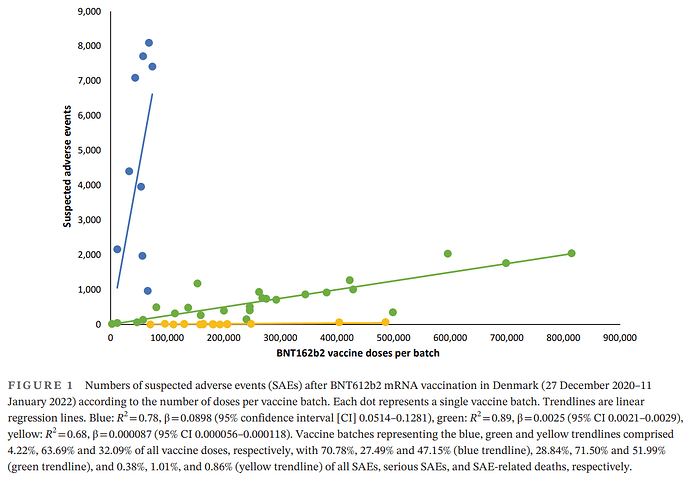This is a complex topic but I’ll try to boil it down to its essence.
mRNA vaccines are pretty complicated and come with all sorts of manufacturing issues. Because mRNA vaccines were being sold for $20-30/dose or less, margins matter and Pfizer decided to change its manufacturing process compared to what they used for most of the clinical trials (e.g. Process 1 versus Process 2). There are all sorts of contamination in the mRNA vaccines:
- dsDNA plasmids, which contain genes for antibiotic resistance. This likely helps the bacteria in your body gain resistance against the specific antibiotics used in the manufacturing process. The plasmids themselves are inflammatory.
- SV40 promoters, which have a theoretical risk of being cancer-causing (oncogenic).
- LPS/endotoxin contamination. They cause inflammation. They almost certainly behave a little differently when mixed with LNPs. The LNPs allow the LPS to get inside the cell where they can trigger different inflammatory pathways rather than the ones triggering from the outside of the cell.
- RNA purity. The commercial vaccines had lower levels of perfect RNA and higher levels of defective RNA. The defective RNA may do nothing. Or they may encode for weird proteins that could cause health problems. We don’t know.
To keep it short, there are many areas where things could go wrong because of these contaminants. But how have things turned out in practice? Did the shoddier manufacturing in the later Pfizer vaccines cause safety to go up or down? (And did it affect efficacy, which I guess we don’t even care about now.)
There isn’t too much data that exists because us patients never really identified a difference between Pfizer and the adenovirus vector vaccines. (We do know that the mRNA vaccines heavily lean towards peri/myo while the adenovirus vector vaccines heavily lean towards blood clots.)
Here’s a diagram from Schmelling and colleagues which shows number of AEs versus the number of doses per batch. The slope (how steep the line is) indicates the rate of AEs. The high slope on the blue group is bad.
One of the things that we can see from this data is that some batches seem to be generate a lot of adverse effects. Manufacturing issues/variability could explain why some batches are really bad in terms of adverse events.
An argument that ALL the batches are problematic
Survey data suggests that most (or all) of the batches are problematic. There is a solid chunk of people (mainly vax injured but to a lesser extent Long COVID) who report negative reactions to getting vaxxed again. That rate seems to be much higher than whatever the bad batch rate is.
A 2013-2015 prospective cohort study examined the effect of re-immunization on people with adverse events following immunization with non-COVID vaccines. Of the 60 patients, 11 had their AEFI re-occur while 4 experienced a new AEFI. The injury rate was 25%. The 25% rate is similar to the rate at which Long COVID patients get hurt by vaccines. This suggests that all vaccines are like playing Russian roulette if you are a chronic illness patient.
The dosing of a vaccine is likely a major factor. The original Moderna vaccine (non-booster) contained 100ug of active ingredient while the Pfizer vaccine contained 30ug. Moderna seemed to be causing more myocarditis than Pfizer. Whereas with the manufacturing issues, Pfizer has some real problems with certain issues that the Moderna vaccines didn’t have. So it may be the case that the dosing is the biggest factor and that the manufacturing issues are much smaller problems.
The bottom line
The regulation of the Pfizer vaccine is terrible because we should not be subjected to medical experimentation. If the quality of the vaccine changes dramatically due to manufacturing differences, we need to test them BEFORE they are widely used in humans.
Now as far as the cause of vaccine injury goes, I’m not sure how much of it is actually due to manufacturing issues. I just haven’t come across great data on it. Treatment-wise it doesn’t really lead to new treatment angles.
Where to get more info
Short 4 minute video presentation… it’s short but it probably won’t make a lot of sense to you:
Maria Gutschi’s presentation at the NCI is really good for understanding the manufacturing issues. This is one of her most recent presentations.


